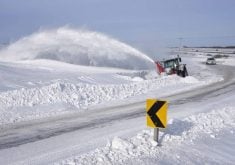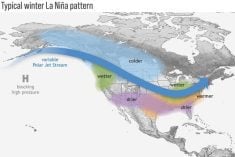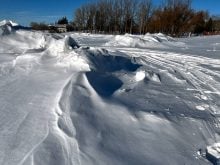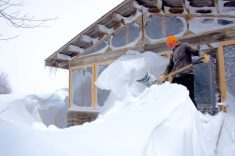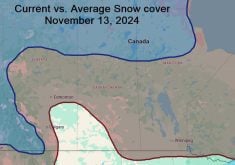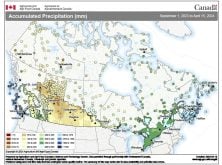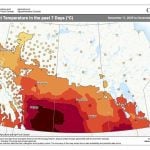At the end of the last article, I said we would look at the frost-free season this past year, but I received a couple of emails asking if I could revisit the topic of snow fences. It has been a long time since we touched on this topic.
With this in mind, and with winter once again knocking on our doors, let’s review how snow fences work and the best place to put them. I will get to the frost-free season data in early November, barring any major weather events between now and then.
For most of us, the No. 1 reason for putting up a snow fence is to prevent snow drifts from forming where we don’t want them to – usually roads and driveways. The second major reason is to capture snow in a particular place to either use the snowmelt in the spring or provide ground cover and insulation in the winter.
Read Also
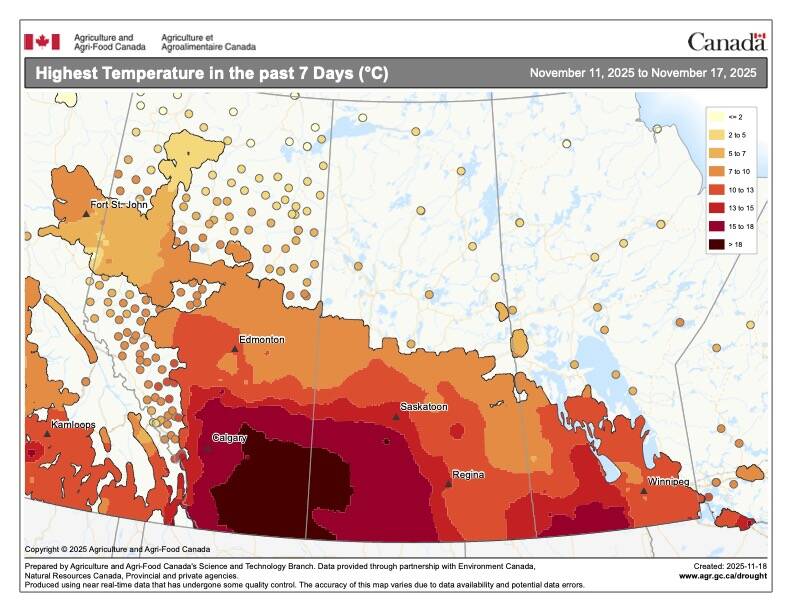
Farmer gift idea: How about a weather station?
The 2025 holiday season is looming, and a home weather station might make a great Christmas gift for farmers
In either case, the two biggest mistakes made when putting up a snow fence are in figuring out the capacity of the fence and in determining how much blowing snow, on average, the fence needs to capture.
To estimate the quantity of blowing snow you could expect in a typical winter in agricultural Manitoba, you first need to figure out the fetch. That is, the distance where wind can pick up snow and then deposit it. For most regions in agricultural Manitoba, the prevailing wind direction during blowing snow events is either north or south, so you need to determine how much open space there is in those directions.
If you have huge, wide-open spaces, you don’t need to worry about distances longer than about four kilometres.
Snow amounts in agricultural Manitoba vary greatly from year to year but during a typical winter, most regions can expect around 100 centimetres (cm) of snow. On average, about 70 per cent of this snow will be relocated. The snow will be moved by wind from where it fell to a new location. This largely depends on how much natural trapping capacity there is (tall grasses, ditches, etc.) before your snow fence.
If we use an example of a wide-open cultivated field with a fetch length of around 500 metres, you could expect around 25 tonnes of snow to be transported per metre over the winter. This amount increases to around 100 tonnes per metre for fetches over 3,000 metres in length.
What does this mean? It means a snow fence will need to be sized and placed so it can capture this amount of snow. If a snow fence is too small, once its capacity is full it will no longer be able to prevent drifting downwind.
Also, if the fence is placed too close to the area you are trying to protect, the size of the drift may eventually cover the area, making the situation worse.
Snow capture
Height is the main feature of a snow fence that determines how much snow will be captured. To capture 25 tonnes per linear metre of fence, you need a fence around 1.2 metres tall. To capture 100 tonnes per linear metre of fence, you’ll need a fence around 2.4 metres tall.
Typically, pre-made snow fences are 1.2 to 1.5 metres tall, but what most people don’t realize is that a small gap of around 15 cm should be left at the bottom of the fence and the ground. This gap helps to optimize the catching ability of the fence, and on a 1.2 metre fence, this extra 15 cm in height can increase the capacity of the fence by 30 per cent.
For most places in our region, a 1.4- to 1.7-metre snow fence will do the job. If you find that your situation needs a higher fence, you can either put the effort into increasing the height or put up a double snow fence, which is two snow fences that run parallel to each other, spaced apart using the guidelines outlined in the next paragraph.
A good rule of thumb for the placement of a snow fence is that fully grown drifts can stretch downwind around 35 times the height of the fence. Therefore, a 1.4 metre fence is capable of producing a drift that is around 45 metres in length. But remember, this is the maximum length, and in some years, we don’t get enough snow or blowing snow to develop a full-sized drift. When installing the fence, it should be placed perpendicular to the prevailing wind direction and should extend up to 10 times the fence height in either direction of the area the fence is trying to protect.
If the area you are trying to protect is 90 metres wide, your fence should extend around 15 metres past this area in each direction.
While nothing can beat your personal experience when placing snow fences, understanding how and why snow fences work can help you tweak your current setup and allow you to get the most bang for the buck.
With soil moisture capacities this fall running near 100 per cent, how much snow — and where it accumulates — will become important next spring because the ground will not be able to take much snow melt, so there’s potential for extreme runoff. After the crazy snowy end to last winter, let’s hope this winter brings us just the right amount of snow.




